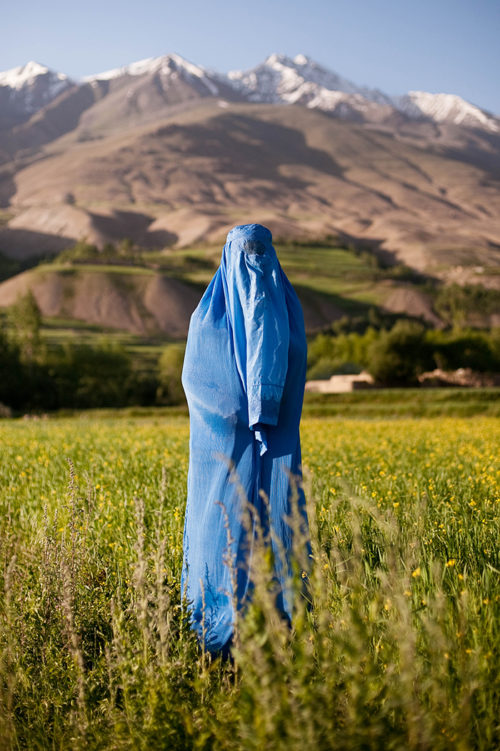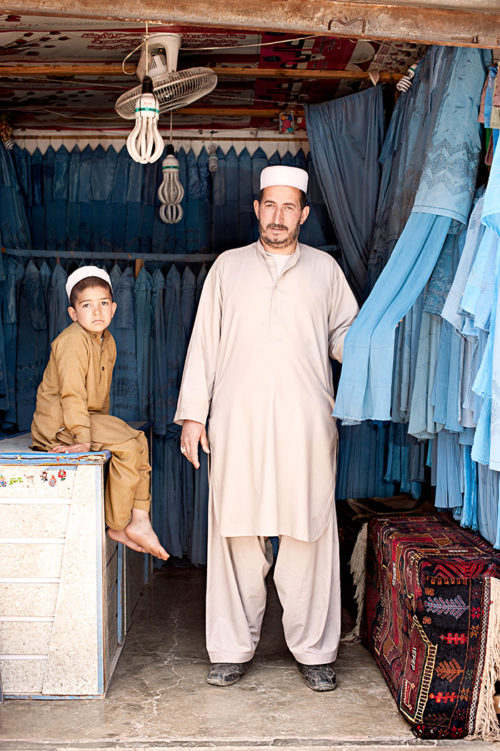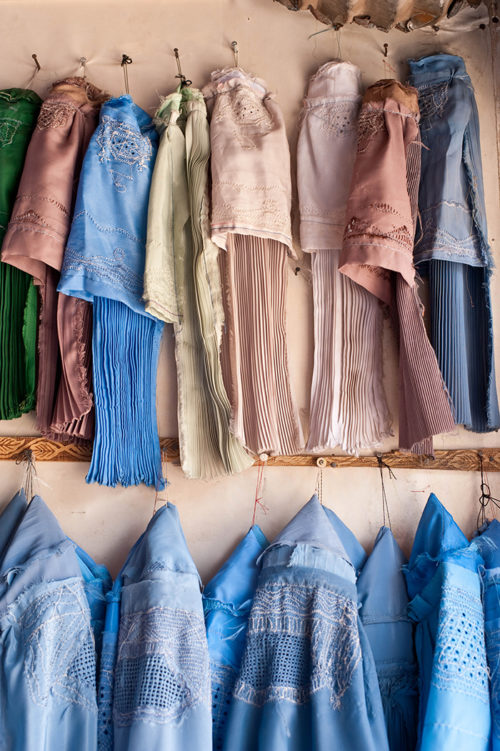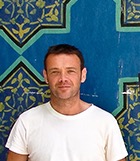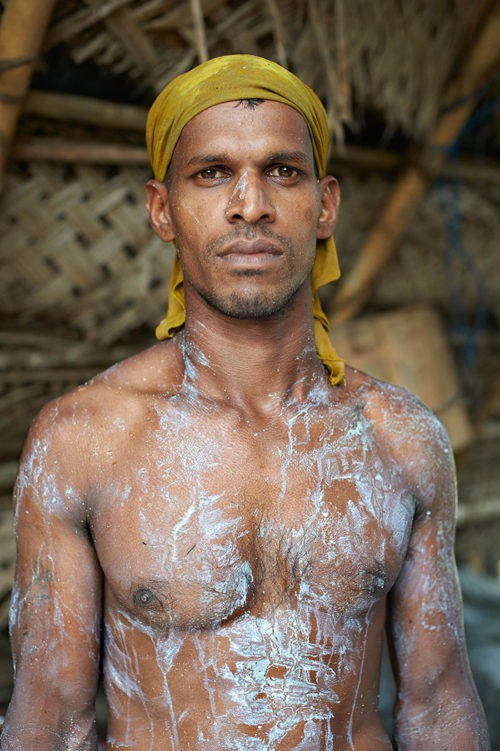Afghanistan: a Burqa for Barbie
By Simon Urwin
In the dusty, traffic-choked heart of Herat, every day is like ‘Black Friday’ in one shop in particular.Haji Shir Agha is the mastermind behind this highly popular and profitable operation, a portly man who boasts not only the clumsy title of ‘President of the Burqa Manufacturers and Sellers Association’, but a widespread reputation as a kind of Afghan version of Alexander McQueen.Some 6,500 miles from the late designer’s eponymous Bond Street boutique, I find myself in a space no bigger than a walk-in double wardrobe. From these inauspicious premises, Haji’s powder blue creations fly off the rails each season, snapped up by tens of thousands of conservative womenfolk – not just in Afghanistan, but far-flung Muslim lands too: from Egypt to Iran; Iraq to Saudi Arabia.When we meet, Mr Agha is dressed head to heel in what I assume fashionistas would call ‘biscuit’. He’s quick to introduce his rather limited range of just two styles: a 100% nylon number costing £8, and a more elaborate Indian silken affair priced at a lofty £25.
“Ladies absolutely love my burqas because of the shape…..it means their bodies are hidden from the stares of men”, he tells me in between sips of tea. “Burqas can come in lots of colours: green, white, yellow or black, but they especially like this colour I produce, it’s the same as the sky, so it makes them feel closer to Allah. They feel on the righteous path to God in my burqas.”The burqa has been ‘on trend’ here for hundreds of years. Like the local equivalent of a Hermès scarf or a Louboutin red heel, it first became popular as a status symbol, with the impractical billowing folds of the upturned shuttlecock clearly signalling that the wearer was a wealthier Metropolitan woman who’d never be seen dead working in the fields like her poorer Afghan sisters.“They were popular long before the time of the Taliban who made them law”, Haji explains. “They are still an important part of our culture, and if I didn’t provide them the women wouldn’t be happy, they would go crazy! Only girls who have been educated abroad don’t like them,” he snorts, rather disapprovingly.Mrs. Agha on the other hand is an avid fan, and Haji enthusiastically lists the contents of his wife’s capsule closet. A bargain burqa is for everyday wear – a trip to the market for example. A mid-range get-up comes out for Friday prayers at the mosque. The most elaborate design – featuring embroidery which took 4 months to complete – is held back for family weddings and the most holy of religious festivals. There is no mix and match in this part of the world. All come in exactly the same ‘Allah blue’, as I like to think of it.
As we’re clearly bonding with this burqa banter, I casually ask Mrs. Agha’s name. There is awkward silence. An immediate frosting over of relations. Roaring tumbleweed. My translator looks to the floor clearly embarrassed and rather pissed off. I’ve unknowingly asked the most impertinent and inappropriate of questions. A clanger on a par with “is she a go-er?”As I’m ushered out of the shop with a forced smile, I notice miniature burqas hanging on the wall. They are not for dwarves, apparently. Instead, they’ve been designed to preserve the modesty of any good Muslim girl’s Barbie doll. I stifle an eye roll. “Decency and decorum are important to learn from a very young age”, Haji says to me, pointedly.
FORM-Idea.com London, 25th September 2016.Photos: Simon Urwin
